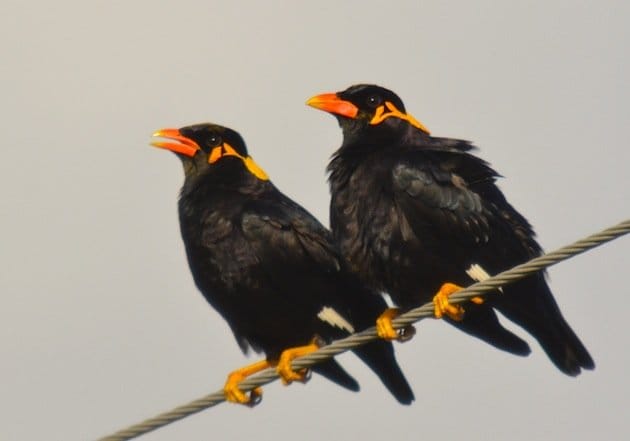
The Carolina Parakeet was extinct by 1918 and extinct in the wild by about 1904. The USA’s only truly indigenous parrot was wiped out by a combination of factors, although direct persecution through hunting seems to have been the major contributor. Today, if you want to see parrots in the USA you need look no further than Miami. Nearly 70 species of parrots have been recorded flying free at some stage or another in Miami, including Hyacinth Macaws. But its not just parrots that are doing well in their adopted city. Dozens of other introduced bird species, largely escapees from pet owners, now call Miami home.
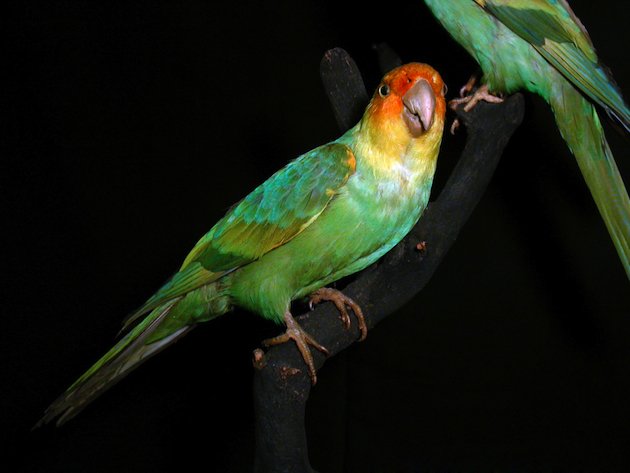 A Carolina Parakeet mounted in a museum in Germany Fritz Geller-Grimm
A Carolina Parakeet mounted in a museum in Germany Fritz Geller-Grimm
Miami, with its warm climate and abundant food sources, has become a hotbed of exoticism. Well-represented exotic families include starlings, ducks and doves and there are also many more individual species that now thrive here. Strangely, only a paltry eighteen exotic bird species are countable for birders, according to the American Birding Association. Some uncountable species, like Mitred Parakeets, are in fact way more numerous than some of the countable species and they are clearly breeding in well-established populations.
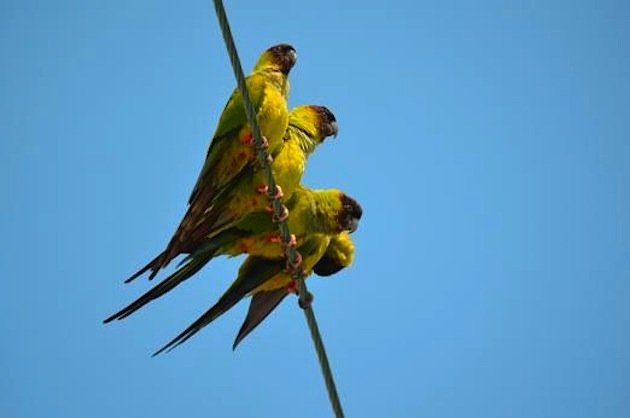 Nanday or Black-hooded Parakeets have recently been accepted as countable by the ABA
Nanday or Black-hooded Parakeets have recently been accepted as countable by the ABA
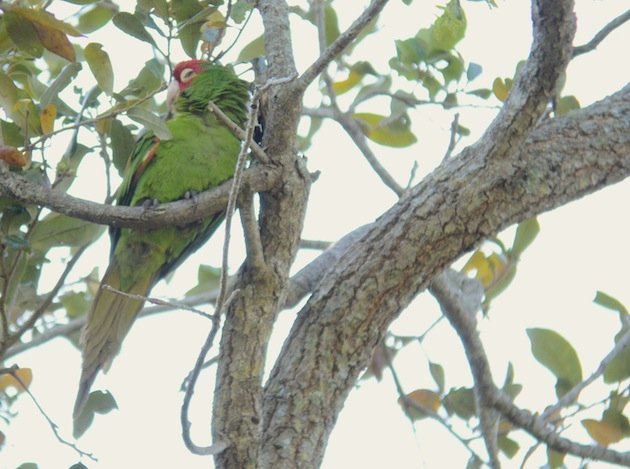 Red-masked Parakeets, readily seen around Miami, are not countable
Red-masked Parakeets, readily seen around Miami, are not countable
I recently had a great day out targeting miami’s exotic birds. But I couldn’t help but get more excited about the countable species as opposed to the uncountable ones. This got me thinking about whether there are other birders that think this way and, more importantly, whether our thinking is too restrictive. Why, for example is it ok to count White-winged Parakeets in Miami but Yellow-chevroned Parakeets, which are more numerous, are off limits? Why is it that Red-whiskered Bulbuls, which are countable, can sometimes be as tough to find as Hill Mynahs, which are not countable. There has to a logical reason. Right?
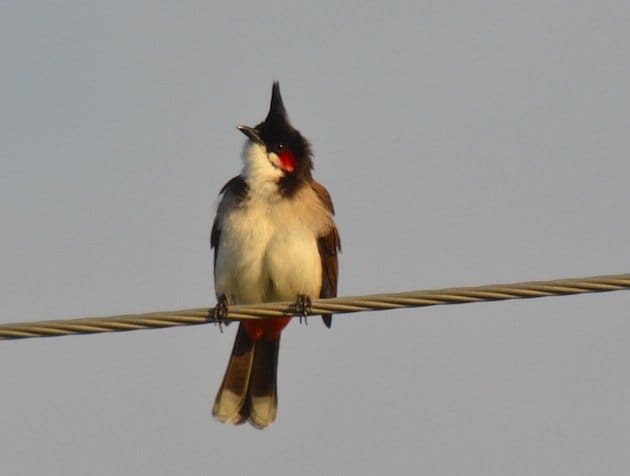 Red-whiskered Bulbuls can be as tough to find as Hill Mynahs
Red-whiskered Bulbuls can be as tough to find as Hill Mynahs
 A pair of Hill Mynahs in Miami
A pair of Hill Mynahs in Miami
So why the reluctance to include more exotics on the official lists? I suspect that it is just this. Reluctance. For an aspiring exotic to be listed as countable on the ABA list the following criteria need to be met:
1. The species is recorded in the form of a published photograph or a specimen archived in an ornithological collection.
2. There is a more-or-less-contiguous population of interacting or potentially interacting individuals, rather than a scattering of isolated individuals or pairs.
3. The population is not currently, and is not likely to be, the subject of a control program where eradication may be a management goal that is likely to succeed.
4. The population is large enough to survive a routine amount of mortality or nesting failure.
5. Sufficient offspring are being produced to maintain or increase the population.
6. The population has been present for at least 15 years.
7. The population is not directly dependent on human support.
8. A publication, ideally in a peer-reviewed journal or book, describes, how, when, and where the above seven criteria have been met.
The stars really need to align for an exotic to join this elite list. But for dozens of species, the first seven criteria, at face value, are easily met. It is with regard to number 8 that the word “reluctance” comes into play. I suspect that way more research and documentation is conducted on indigenous bird species.
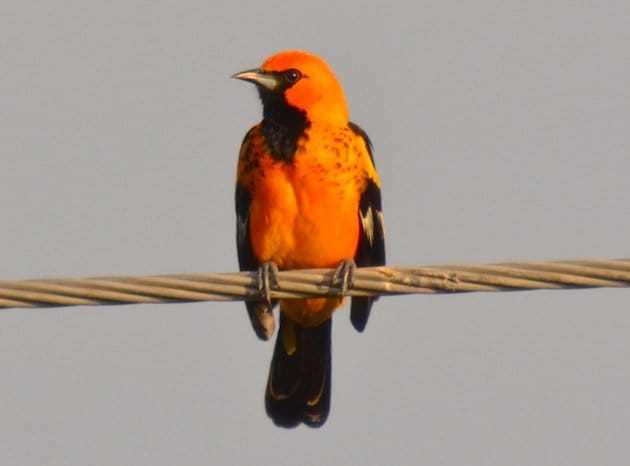 The Spot-breasted Oriole, a native of Central America, is one of the lucky exotics to make the list
The Spot-breasted Oriole, a native of Central America, is one of the lucky exotics to make the list
There is a well-founded preference amongst ornithologists and researchers to focus on the pressing research needs of declining native species rather than devote valuable research hours to increasing introduced species. The exceptions to this rule might pertain to increasing exotic species that researchers suspect are having massive impacts on native birds ie. European Starlings (although it must be noted that European Starlings exist on the ABA list as “native vagrants” on account of a specimen from Shemya Island, Alaska). I would suggest that precisely for this reason many species that might fit the criteria for numbers one through seven fall short because they have not been given their due diligence by researchers.
So where do all these rules leave us common birders who just want to enjoy a day’s birding in a city like Miami? Do we abide by the rules and only count the “countable exotics”? Or do we rebel and compile our own lists? To me the choice is like drinking coffee – if its legal do whatever you please.
httpv://www.youtube.com/watch?v=mz269BFZw1c













Please consider this as a base-line question: why does an ABA listing matter over a personal list or ebird entry?
Yeah, I suppose ornithologists might not be too excited about documenting yet another Florida exotic species. But that’s where citizen science could come in. Why couldn’t somebody pick a species — say Mitred Parakeet for example — and deal with those seven points? Quite likely eBird historical data could be used to reduce the need for doing a multi-year survey.
And notice that point #8 doesn’t require you to publish in a scientific journal. Seems to me that an article in the newsletter of the Florida birding society (whatever it’s called) should suffice.
Paul – you make a good point. I too hope that citizen science (gathered responsibly of course) should play a greater role in future.
I wonder how the Carolina parakeet would interact with the introduced parakeets today. Would the Carolinas have kept some species from even taking hold by filling the niche? Sad to think about.
Frank – interesting question. I know that they were closely related to Nanday Parakeets and Sun Conures and that they fed on various poisonous vegetation. So quite possibly they could have co-existed with other parrot species and not had too much competition for food?
I have lived in Miami-Dade my whole life and right now I’m in the process of a county big year. Exotics are important for reaching my goal and beating the previous record of 298, but deep down inside I am not a fan of ticking exotics at all. I would much rather spent the day trying to find a tricky native like Yellow-breasted Chat than a tricky exotic like Red-whiskered Bulbul… I feel like adding specialty exotics like Spot-breasted Oriole and Purple Swamphen take away from our native specialties like White-crowned Pigeon and Black-whiskered Vireo.
Rangel – great to hear your thoughts. Good luck for your Big Year!
Athough the protection of native species and the enhancement of their habitats should always be a priority, there is uniqueness to the ecology of southeast Florida which is often overlooked. Although it would not seem so judging by a map, southeast Florida functions ecologically like an island. It is surrounded by water on three sides and by temperate forests and frosts to the north (many species such as Tufted Titmouse, Carolina Chickadee, nuthatches, etc reach the southern limit of their range either just north of Orlando or just south of Lake Okeechobee). This fact coupled with the geological youth of southeast Florida as a landmass ensures that our tropical hardwood hammocks, along with various other habitats, become virtually dead in the summer. Only those land bird species able to adapt to a more tropical climate (Northern Cardinal, Blue Jay, Northern Mockingbird), island-hopping specialists (‘Cuban’ Yellow Warbler, White-crowned Pigeon, Mangrove Cuckoo), or migratory Caribbean species (Gray Kingbird, Black-whiskered Vireo, Antillean Nighthawks) have managed to colonize southeast Florida naturally. By inadvertently (or purposefully?) introducing birds like orioles, parrots, mynas, and waterfowl, we have simply sped up the process and enriched an avifauna which otherwise had a vast number of empty niche spaces (take note that almost every island in the Caribbean has an endemic parrot and oriole, so it is interesting that parrots and orioles from the same Caribbean genera have managed to take hold here as well). The morality of such introductions is a different matter entirely, but from an ecological standpoint, most of these species are not competing with anything because there was initially nothing with which to compete.
Thanks!
That’s a real good point Carlos!
The ABA criterion #7 is very important in Southeast Florida, where the environment is so heavily human-controlled.
A perfect example is that most of the birds photographed here are perched on steel cables. I seriously doubt whether all the parrots, bulbuls and mynahs would persist if plantings of exotic flowering and fruiting trees were not maintained by humans, and the environment were permitted to return to the mangrove, everglade and rock pineland of 100 years ago.
If we take the ABA #7 criterion that strictly, then Barn Swallows and Purple Martins should not be ABA-countable anywhere in the United States as they are utterly dependent on man-made structures for nesting sites.
Chimney Swift, Cave Swallow, and Cooper’s Hawk would not persist in southeast Florida as breeders if it where not for humans — should these populations become uncountable? The swallow and the swift are here because of man-made structures being used as nesting sites. Cooper’s Hawk became a breeding resident due to the invasion and population explosion of the introduced Eurasian Collared-Doves, creating enough of a prey base to make nesting Accipters successful in fledging young.
No one said it wasn’t messy.
Messy keeps things interesting!